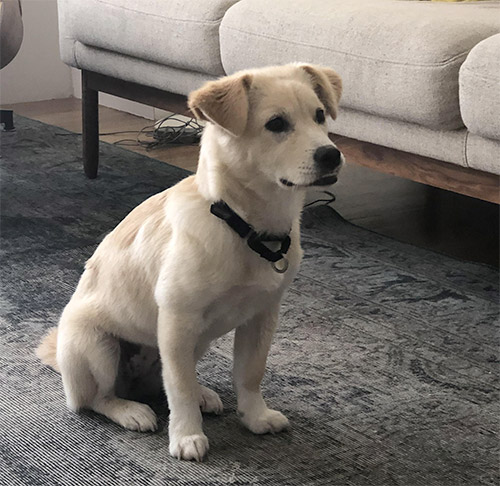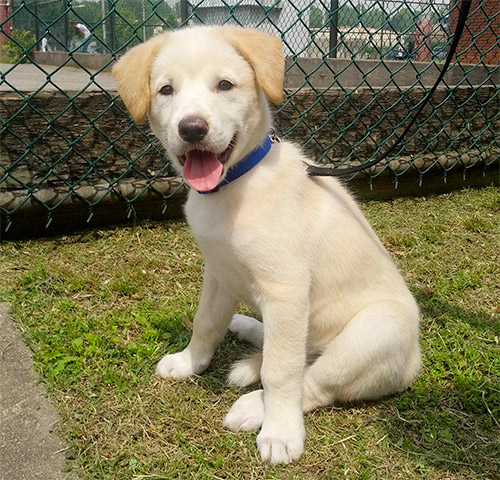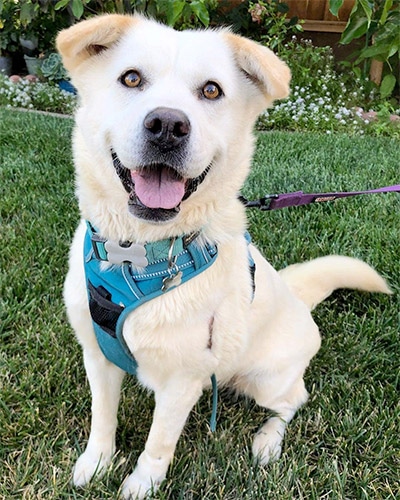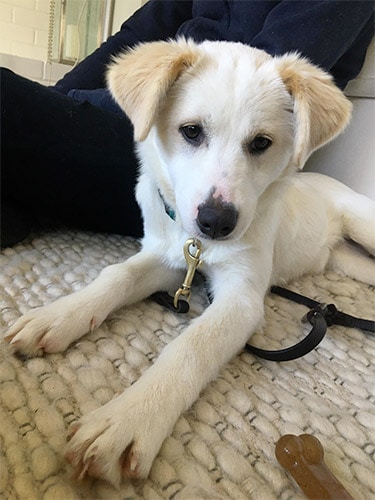The Korean Jindo and the Labrador Retriever are both very popular dogs that, when combined into one breed, make a fantastic mix.
Breeders often focus on pairing up only the best and healthiest of these differing dog types to create one that is beautiful and memorable.
If you’re interested in trying out this breed, it is important to understand a few important factors.
Doing so can help cut back on potential complications and ensure that you feel comfortable with your new pup.
Here are a few things to prepare for when considering this fun and attractive dog.
Appearance
Comparing the Jindo and the Lab will reveal dogs that look very little alike.
The Jindo has pointed ears, a medium-sized frame, with an intelligent face.
Their lithe bodies include a fairly broad skull and either a sickle tail or an uncurling otter tail.
By contrast, the Lab has a larger head with floppy ears, friendly eyes, and potential for bulk, and a wild, hard tail that may be sharp on impact when they get into a truly excited state.
Thankfully, their appearances aren’t so drastically different that they can’t find some common ground.
We’re not talking about the difference between a Chihuahua and a Saint Bernard here!
Careful breeding and trait selection can bring out the best of both dogs and create a very appealing look.
Though some blends may create a pup that looks heavily like one parent over the other, you might get fun combinations as well.
For example, you might get the overall Jindo shape, with their broad skull and lithe, but firm, body mixed with the floppy ears and the perennially friendly eyes of the Lab.
Typically, this breed also ends up with a self-cleaning and double-layered coat that’s a major bonus.
It’s weather-resistant and waterproof, which should help your dog maintain their temperature and simply feel more comfortable with no difficulty.
They do shed a lot, though, so be prepared for that concern.
As for their coat colors, that can depend based on the parents.
Labs can tend towards tan, chocolate, and black colors, while the Jindo may have white, gray, and other tones in their coat.
Both typically have a single-color coat, so don’t expect a lot of variations there.
You won’t get the splotches you see on other dogs, which isn’t necessarily a bad thing if you want a pure-breed style.
As for size, that can vary heavily.
While both are large dogs, their mix produces dogs standing up to 23 inches tall with a weight varying between 45 and 70 pounds.
Lab-heavy mixes tend to weigh more, as they’re the bulkier and thicker of the two breeds.
Unfortunately, they may also struggle with obesity if their appetite is not kept in check, as they love eating.
Some well-meaning owners may think they need more food because of their love of eating, but they’ll eat anything you put in front of them and keep going.

Temperament
If you don’t want an active dog that will require a lot of exercise and attention, avoid the Jindo Lab mix.
Both breeds are fairly high-energy because they’re work dogs.
They may get very anxious if you don’t work with them regularly and could even show some destructive behaviors.
Expect your Jindo Lab to chew or even push their boundaries if you don’t keep them active and burning energy.
One thing that’s nice about these dogs, though, is that they tend to be relatively quiet unless they note danger or want attention.
They don’t whine a lot and rarely howl, though they do bark when they see strangers outside the house or if new people are visiting you.

Some might also bark to get your attention when they want to play, though they aren’t always excessively vocal.
You can often train out many of these barking behaviors because the Jindo Lab is very intelligent.
The Jindo in particular is known for their brains, though the Lab is often underrated in intelligence.
Their overall friendly demeanor (which most Jindo Labs will inherit, thankfully) masks a sharp mind.
As a result, this breed learns multiple commands fairly quickly and will respond to them most of the time on the first command.
The one thing to watch in this breed is a protective or suspicious nature.
That’s because the Jindo is often a rather one-person dog who may not immediately trust strangers.
They do warm up to most people fairly well, but it may take some time.
This tendency can be tough to combat in Jindo-heavy dogs because they have a high streak of independence and self-possession.
As a result, they may struggle to listen to you unless you establish dominance quickly.
Both are very, very loyal breeds and will love just about anybody who lives in your home.
Jindos do have a tendency to be one-person-centered, though they will enjoy interacting with anyone in your family.
On the downside, they both are runners, and you’ll need a high fence to keep them from leaping over and taking off after animals, other dogs, or even cars.
Due to their heavy need for exercise, it is important to engage with them for between one and two hours every day.
A clever way to meet this need is to create a schedule of walks, playtimes, and feedings.
The Jindo Lab loves strict schedules and responds to them well.
They also love positive reinforcement and do not react well to negative correction.
Yelling or even hitting your Jindo Lab is likely to result in fear and even more poor behaviors.
Never hit a dog, no matter what the circumstances.
Health Concerns
Obesity is the biggest problem you’re likely to experience.
The Lab struggles with weight problems because they’re often so cute and so good at getting their owners to feed them more.
The Jindo, while less food-crazy when compared to the lab, will also eat anything you give them and beyond.
As a result, this mix is often a pretty hungry breed that will often go out of its way to eat.
That may vary depending on the individual dog, as some might simply be less driven by food than others.
When planning their diet, make sure that their snacks only make up 10% of their food intake and their meals should be smaller than you think.
For example, a typical Jindo Lab mix needs only two or three cups of food daily.
That might not even fill a fairly large dog food bowl but is the right amount because even big dogs need fewer calories than you might think to be healthy.
The food in the bowl might barely touch its sides before your Jindo Lab eats it up.
They’ll immediately look to you for more: but don’t fall victim to their cuteness!
Be strict and limit their diet to set their food expectations early.
This breed is prone to a few different conditions that can become chronic and difficult.
Obesity is a common issue, as is inflammatory bowel disease, cataracts, glaucoma, allergies, hypothyroidism, hip dysplasia, bladder stones, and diabetes.
Weight management can help with a lot of these issues, as can careful diet management.
Talk with your vet about a diabetes-prevention diet, as well as an old-dog meal plan that may help your pup as they age.
As for grooming, brushing their coat once a week will result in minimal matting, catch a lot of their loose fur, and minimize their shedding troubles.
Both are moderate shedders and, with a little patience, grow to love brushing times.
Use a fine-tooth brush or a grooming glove with light fingers to keep their coat clean.
Weekly teeth brushing and ear wax removal can also help.
Trim their nails when they start clicking on hard floors.

Taking Care of This Pup
If you’re interested in the Jindo Lab mix, make sure that you pay attention to their diet.
The Lab is particularly food-driven and may find clever ways to get extra meals and snacks from you.
Try to limit them to just a bowl of food every day and keep them engaged.
Just as importantly, you need to make sure that you prepare for their high energy levels.
Both Jindos and Labs need a lot of attention and can become very excitable if you don’t train them out of these behaviors.
Doing so will help create a beautiful dog that your whole family will love.


